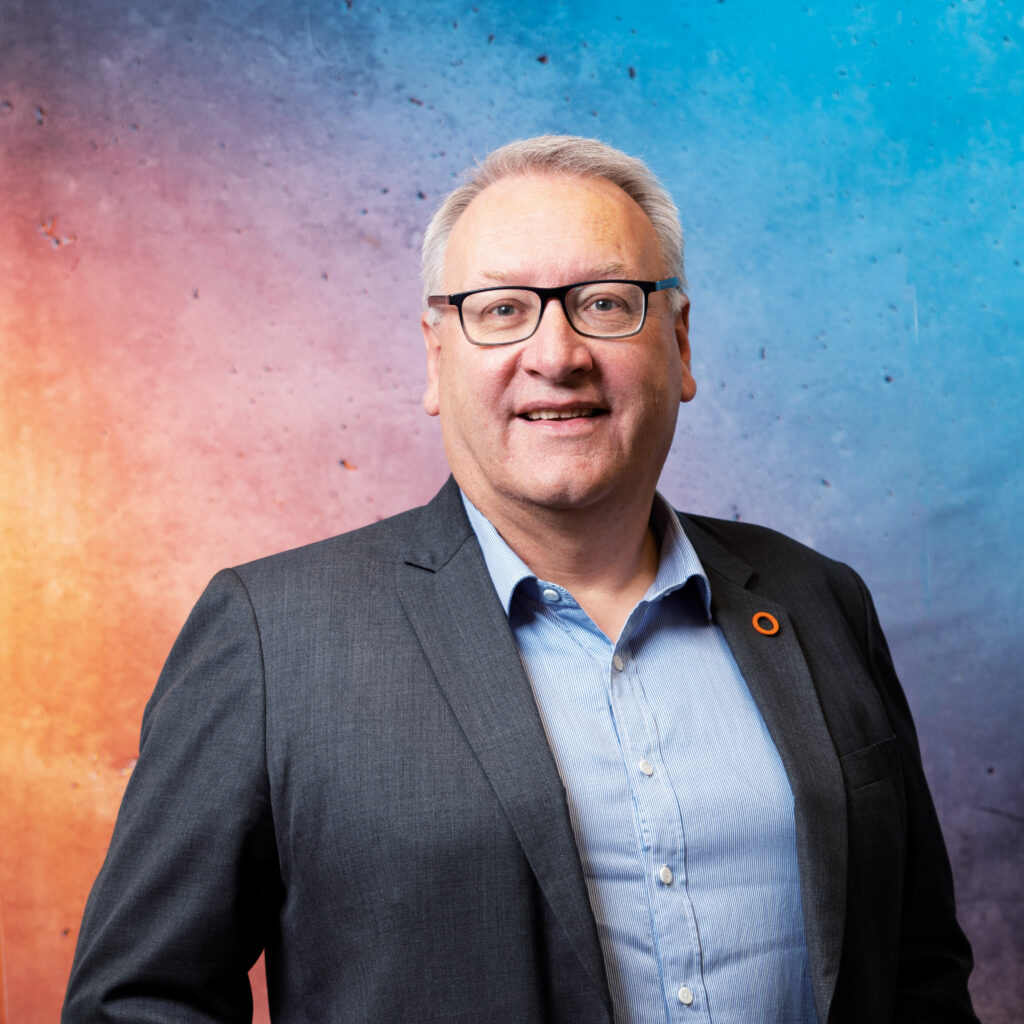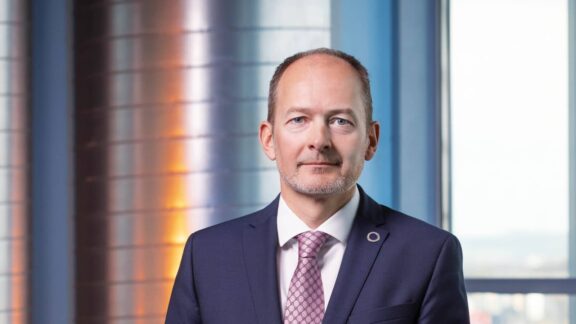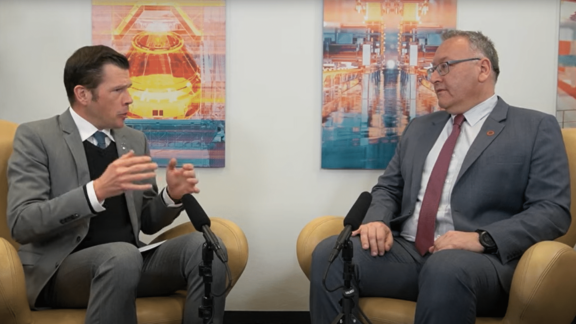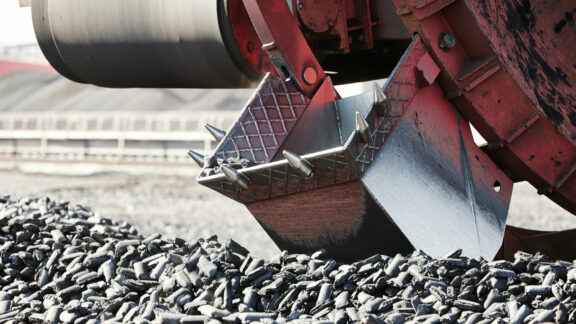Peter Örtelt heads the Integrated Plants division at Primetals Technologies, which puts him firmly at the intersection between business consultancy, strategic planning, metallurgy, and plant-logistics optimization. Örtelt has become one of the go-to specialists for the Metals Magazine team whenever complex, multi-disciplinary topics arise. It is, therefore, with some delight that we this time feature Örtelt—and his personal view on what if …

… the world’s nations started to see even greater value in having a local steel industry?
Peter Örtelt: This is one of two opposing trends in our industry. For some producers, it makes sense to focus on local markets rather than on exports—and to prioritize a reduction in carbon emissions and costs. On the other hand, there is also a trend toward increased consolidation. Certain multinationals aim to further secure production related advantages using “economies of scale” principles. One interesting strategy is for large cooperations to build “upstream hubs.” These hubs would put the more energy and raw-material intense steps of the production chain—basically, all ironmaking—into regions where the resources required can be obtained at relatively low cost. For example, Australia is well-positioned to build upstream hubs thanks to its vast amounts of ore deposits. Now, suppose solar power has become even more prominent in the country. In that case, the ore could be turned into hot-briquetted iron or pig iron using green energy because the solar energy could be used to produce hydrogen—and hydrogen could then serve as the reducing agent at the ironmaking stage. I could see countries like Japan buying the resulting products in large quantities, but setups like these are always dependent on mutual political will.
… consolidation in the steel industry continued at the current pace—or even intensified?
Örtelt: If we look at the companies that provide raw materials to the steel industry, we see a landscape of only a few conglomerates, which are highly relevant, and of many smaller independents. As is often the case, larger corporations dictate the pricing. You can observe this phenomenon in the steel industry, as well, and this is one reason why carmakers often use two or three suppliers rather than just one—it puts them into a better negotiating position, or, in a less bad one, since there is only limited room to maneuver, to begin with. What the larger companies all have in common is that they currently strive to lower their global footprint, in terms of carbon emissions but also simply on a cost basis. Consequently, it may make sense to execute the ironmaking and steelmaking processes in one region and turn the resulting intermediate products into value-added goods elsewhere. Overall, the steel industry’s large companies have several advantages over the smaller ones: they can exert greater political influence—for instance, via lobbying—and they have an easier time securing their interests in terms of raw-material procurement, market position, pricing of goods, and ensuring business continuity in a changing world.
Many larger steel producers are currently striving to optimize their global footprint, in terms of carbon emissions but also simply on a cost basis”
… there was another global supply shake-up? should we all have better contingency plans?
Örtelt: I think we are experiencing the aftermath of a shake-up of global supply chains at present, and companies are reacting to the new situation as best as they can. The last few global crises—such as the housing bubble, Covid, and the climate crisis—have made apparent the flipside of globalization. Shake-ups also impact not just the metals industry but also other sectors—pharma; for instance, when the whole world is dependent on India for vaccine production, some nations may feel highly vulnerable to supply-chain constraints. Understandably, they would look for alternatives or additional suppliers to become as resilient as possible. Heavy industry—our sector—must take supply chain woes particularly seriously because of the scope and size of the projects it realizes. If you know that, in the event of a delayed order fulfillment, there is a penalty to pay, any supply-chain problems affecting key components or items with longer lead times can be quite unnerving. Penalties are why many companies in the steel business are currently re-evaluating risks and adopting new strategies. Sometimes, they will choose an “economies of scale” setup, with lower prices but fewer suppliers and more risk. Other times, they will diversify.
… new governmental regulations effectively rendered integrated steel production obsolete?
Örtelt: In many regions, the reality is that producers have started to move away from integrated steel production. There are several reasons for this development, but governmental regulations—those that already exist and those that are expected to come into force—certainly play an important role. In the long term, integrated plants will have to be modified so that the ironmaking aspects can be executed much “greener” way. Greener means that production units such as the coking plant, sinter plant, and blast furnace will be replaced, with the option of moving the ironmaking side of production to areas with large raw-material deposits and readily available and cheap energy. However, if a producer chooses to distribute different production steps to different countries, they will have to deal with multiple governments—each with its own political agenda and lifetime. COP27, the 2022 climate conference held in Egypt, clearly demonstrated how hard it can be to reach an agreement that is satisfactory to the international community and individual governments alike. I do believe, though, that our societies need to rethink globalization and base any consensus on an increased sense of urgency regarding environmental matters.
The world’s societies need to rethink globalization and find consensus based on a greater sense of urgency regarding environmental matters.”
… steel producers increasingly got interested in hybrid steelmaking? what are the challenges?
Örtelt: First off, we should clarify that the term “hybrid steelmaking” is used in the context of the transformation of the integrated steel plant and involves the introduction of electric steelmaking to the traditional production route. Adding an electric arc furnace is not without its challenges: The obvious issue centers around power consumption, especially since a large EAF is required to reach the desired capacity. The electrical grid needs to provide much more energy than before, and the EAF’s power supply must interact with the grid in a “clean” manner. But even if the capacity of the furnace was chosen correctly, integrating it into the existing logistics setup and production scheduling is the next challenge. The tap-to tap time of a converter—a BOF—is often shorter than that of an EAF. Also, changes to secondary metallurgy are often needed, as well, if any losses in overall production volume are to be avoided. A core question is on how to achieve continuity: “How can we keep producing the same steel grades as before?” Especially when relying on high scrap rates, it is mandatory to use extremely well-sorted scrap for the production of higher-end grades. Finally, adding an EAF will affect some by-products, with less metallurgical gas resulting from the process, which must be compensated for.
… Elon Musk, just having taken over Twitter, decided to get into renewable hydrogen production?
Örtelt: In the early 90s, when I was still a metallurgy student, hydrogen-powered technologies were regarded as the cornerstone of the future of steel production. Thirty-three years later, it seems that not much has changed—hydrogen is still a far cry from being mainstream. But I do think that we are all feeling increased pressure to take hydrogen seriously. So, to answer your question, if someone like Elon Musk were to successfully lower the cost of hydrogen production—and it would have to be green hydrogen made using renewable energy from sources such as solar and wind—it would definitely propel metals production forward. As an industry, we would then have the chance to move away from coal completely. Hydrogen can already be used as a reducing agent. For instance, direct reduction technologies may rely on natural gas today, but they could relatively easily be converted to being run on hydrogen. So the core problem is really the availability of green hydrogen and not that of the solutions required to make good use of it. Those already exist. Now, if Musk—who is new to the field of metals production—arrived with fresh, disruptive ideas, it could expose some of the industry’s blind spots regarding hydrogen and lead to a push in the right direction—with a new and innovative approach.


